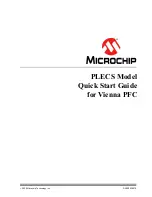
User’s Manual
C166S V1 SubSystem
Central Processing Unit
User’s Manual
3-18
V 1.6, 2001-08
3.4
Interrupt and Exception Execution
An Interrupt and Exception Handler is responsible for managing all system and core
exceptions. There are four different kinds of exceptions that are executed in a similar
way:
• Interrupts generated by the InTerrupt Controller (ITC)
• DMA transfers issued by the Peripheral Event Controller (PEC).
• Software traps caused by the TRAP instruction
• Hardware traps issued by faults or specific system states
Normal Interrupt Processing
The CPU temporarily suspends the current program execution and branches to an
Interrupt Service Routine (ISR) in order to service an interrupt-requesting device. The
current program status [Instruction Pointer (IP), Processor Status Word (PSW), and in
segmentation mode, the Code Segment Pointer (CSP)] is saved on the internal system
stack. A prioritization scheme with 16 priority levels and with 4/8 sub-levels (4/8 group
levels) specifies the order of multiple interrupt-request handling. The maximum number
of interrupt requests is 112 (configured in steps of 16), wherein the lowest priority level
is reserved for the CPU and cannot be used for interrupts.
Software and Hardware Traps
Trap functions are activated in response to special conditions that occur during the
execution of instructions. A trap can also be caused externally by the Non-Maskable
Interrupt (NMI) pin. Several hardware trap functions are provided for handling erroneous
conditions and exceptions that arise during the program execution. Hardware traps
always have highest priority and cause immediate system reaction. The software trap
function is invoked by the TRAP instruction, which generates a software interrupt for a
specified interrupt vector. For all types of traps, the current program status is saved in
the system stack.
Interrupt Processing via the Peripheral Event Controller
A faster alternative to normal interrupt processing is servicing an interrupt requesting
device by the C166S's integrated PEC. Triggered by an interrupt request, the PEC
performs a single-word or byte data transfer between any two memory locations through
one of up to 16 programmable PEC service channels. During a PEC transfer, the normal
program execution of the CPU is halted. No internal program status information needs
to be saved. The same prioritization scheme is used for PEC service as for normal
interrupt processing.
Содержание C166S V1 SubSystem
Страница 10: ...User s Manual C166S V1 SubSystem User s Manual I 6 V 1 6 2001 08...
Страница 16: ...User s Manual C166S V1 SubSystem Introduction User s Manual 1 6 V 1 6 2001 08...
Страница 126: ...User s Manual C166S V1 SubSystem Central Processing Unit User s Manual 3 96 V 1 6 2001 08...
Страница 178: ...User s Manual C166S V1 SubSystem Memory Organization User s Manual 4 52 V 1 6 2001 08...
Страница 206: ...User s Manual C166S V1 SubSystem Instruction Set User s Manual 5 28 V 1 6 2001 08...
Страница 306: ...User s Manual C166S V1 SubSystem Detailed Instruction Set User s Manual 6 100 V 1 6 2001 08...
Страница 362: ...User s Manual C166S V1 SubSystem The External Bus Interface User s Manual 8 40 V 1 6 2001 08...
Страница 452: ...User s Manual C166S V1 SubSystem General Purpose Timer Unit User s Manual 12 44 V 1 6 2001 08...
Страница 454: ...User s Manual C166S V1 SubSystem Instruction Index User s Manual 13 2 V 1 6 2001 08...
Страница 459: ......
















































